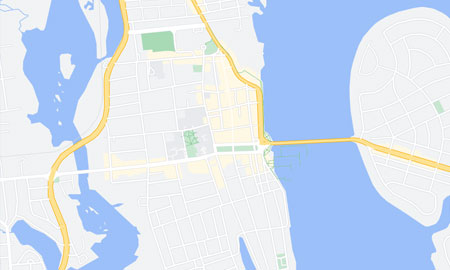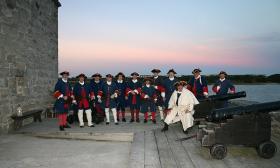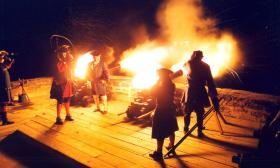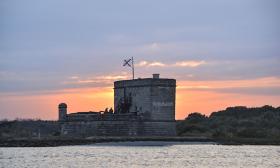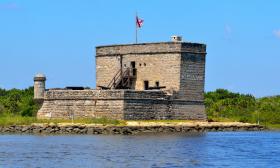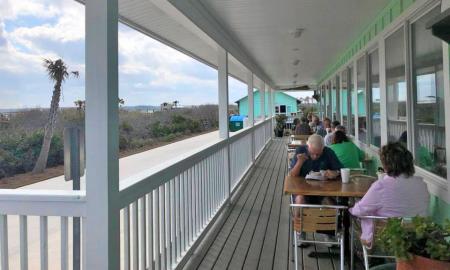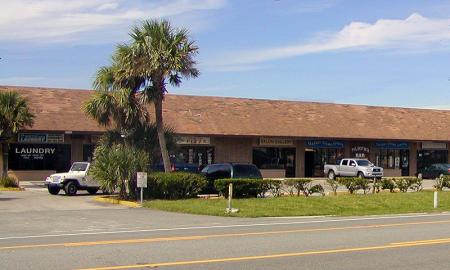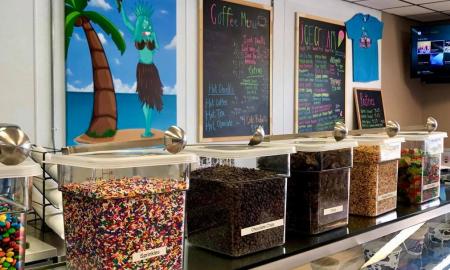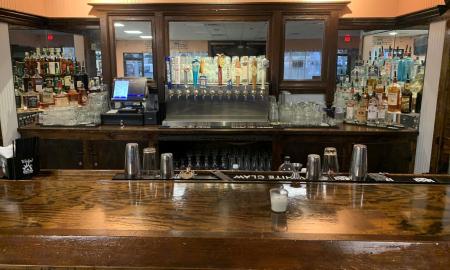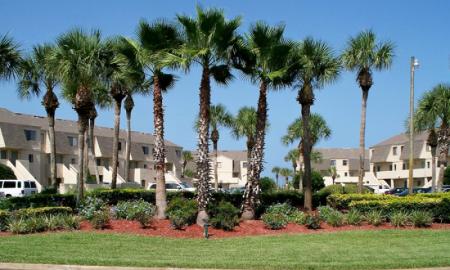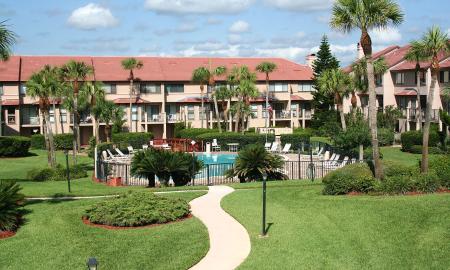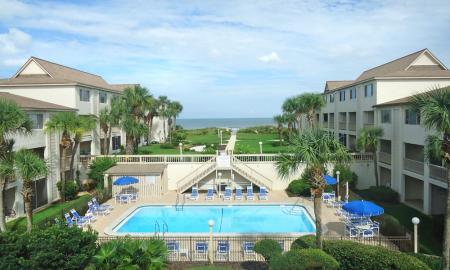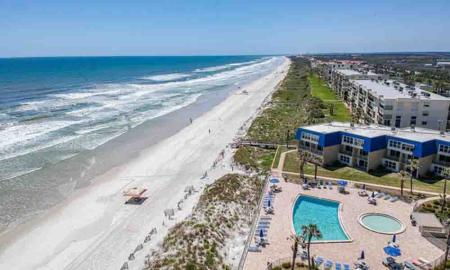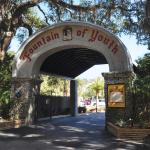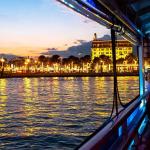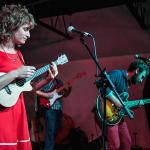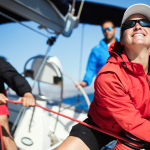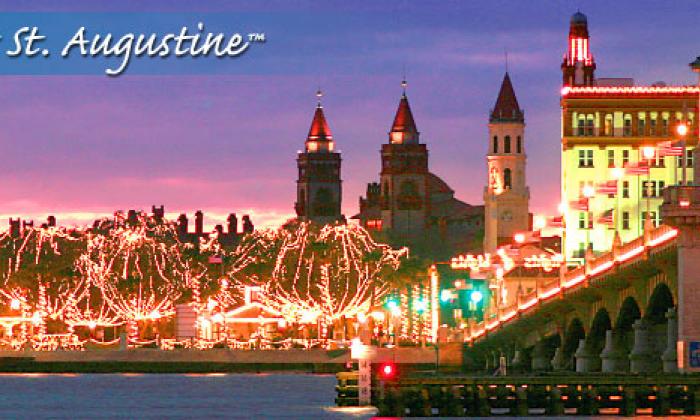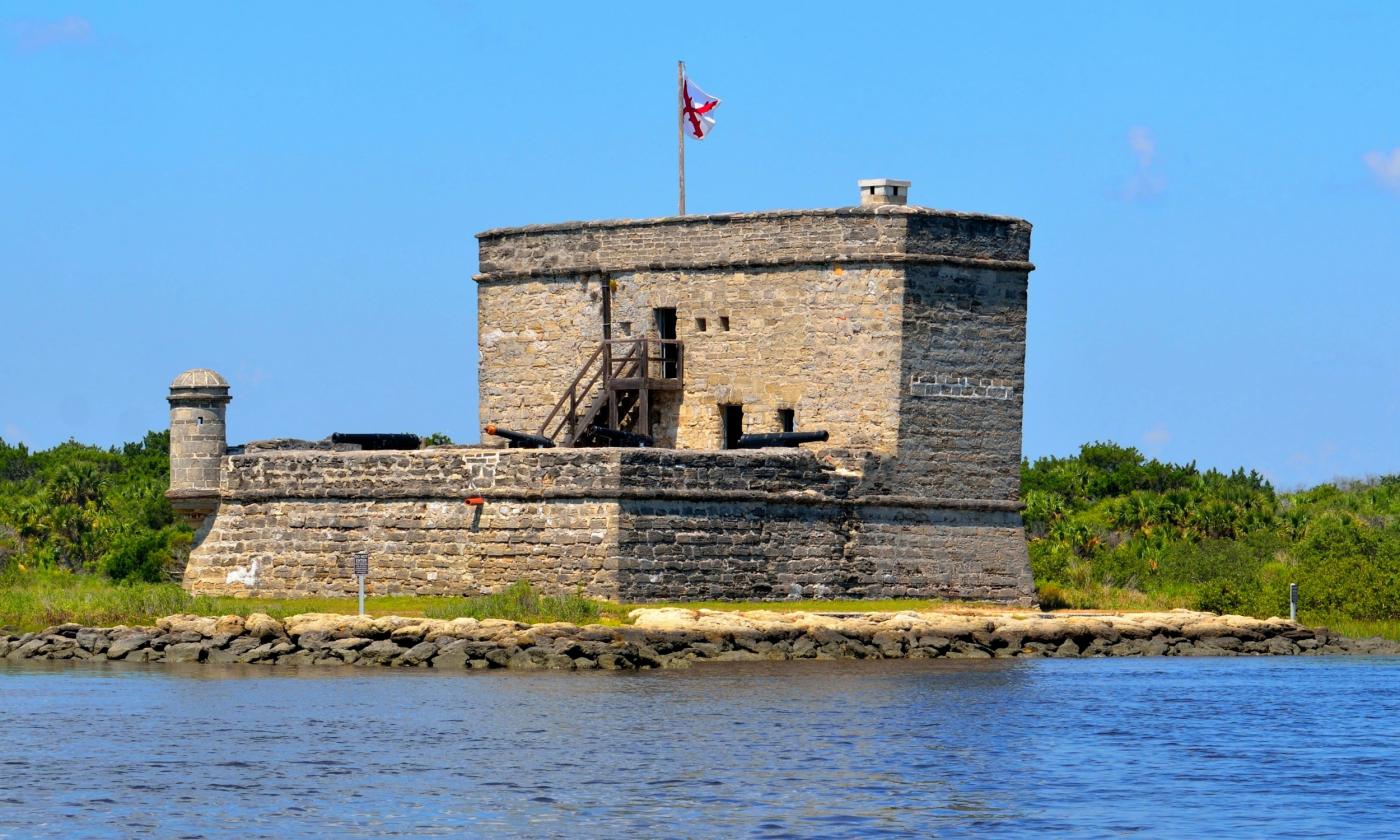
The Fort Matanzas Park has reopened.
The Park and Amenities at Fort Matanzas
The Fort Matanzas National Monument is operated by the National Park Service, which has two missions:
- To preserve the fortified coquina watchtower.
- To protect approximately 300 acres of dunes, marsh, and maritime forest—and their flora and fauna.
The property has a nature trail that winds through the maritime forest and along the highest part of the barrier island, known as a hammock. There is also an unpaved trail through the marsh. Both trails are less than a mile in length. There's a shaded picnic area and public restroom facilities near the parking lot adjacent to the visitor center.
Across A1A, there is a parking lot for the Atlantic Ocean beach.
Amenities at Fort Matanzas
- Ferry rides to the Fort Matanzas Monument
- Nature trails
- Fishing, on both the river and the ocean
- Reenactments/demonstrations
- Guided tours
- Picnic facilities
- Restroom facilities
- Beach parking and walkover to Matanzas Beach on the Atlantic Ocean.
Fort Matanzas National Monument
Built in 1742 to defend the city of St. Augustine from British attack, the Fort has stood in the Matanzas Inlet for more than 250 years. A remnant of Florida's Spanish past, President Calvin Coolidge declared the fort a national monument on October 15, 1924. Today, the Fort Matanzas Monument is maintained by the National Park Service.
The park hosts frequent reenactments and living history demonstrations depicting the times of the early fortification. A reenactor is on-site almost every day during the summer, relaying the fort's history to visitors. Weapon firing demonstrations also take place on some weekends.
History of Fort Matanzas
Fort Matanzas has a long history closely connected to Pedro Menéndez de Aviles, who founded St. Augustine. In 1565, Menéndez killed more than 250 French Huguenots upon the shores of this inlet, including the famed Jean Ribault. Afterward, the Spanish named both the fort and the inlet "Matanzas," which means "slaughters" in English.
Before the fort was built, historians believe a small wooden watchtower guarded the watery 'back door' entrance to St. Augustine. The fort visitors see today was not built until British attacks increased along the Florida coast in the 1740s. Visitors will note some similarities between the construction of St. Augustine's fort, the Castillo de San Marcos, and Fort Matanzas because both are made of coquina. The stone is impenetrable to cannon fire and easy to quarry, providing the Spanish with ample building material.
Visit Fort Matanzas
NOTE: There is no ferry service to Fort Matanzas on Tuesdays and Wednesdays. The park on Anastasia Island is open.
Admission: FREE
Address: 8636 A1A South, St. Augustine, Florida 32080 (The area is just north of Matanzas Inlet.)
Parking: For the fort, river, and trails, park on the west side of A1A (8635 A1A South on your GPS). For the beach, park east of A1A (8655 A1A South). Transportation to the fort is by ferry only.
Dogs: Dogs on leashes are allowed in the park and on the beach, but not in the buildings, on the ferry, or at the fort.
Ferry to the Fort
The visitor center and most of the park grounds are open daily to the public; however, the fort is only accessible via a passenger ferry, which leaves the mainland hourly, from 9:30 a.m. to 3:30 p.m., Thursdays through Mondays. The ferry and fort admission are free; guests must obtain a ferry pass from the visitor center.
No person, of any age, may board the ferry without a pass. Passes are given out on the day of the trip only. All passes may be claimed by 11:00 a.m. on busy days. No passes are distributed over the phone.
Matanzas Beach near Fort Matanzas
The parking lot directly across from the entrance to Fort Matanzas on A1A offers vehicular access to Matanzas Beach. Just south of there, near Matanzas Inlet, a parking lot on the ocean side, serves a walkover ramp to the beach.
The vehicular and walk-over ramps are CLOSED for repair.
Both the vehicular and walk-over ramps to Matanzas Beach are closed until May 2026. The county is repairing the walkover ramp during that time and is blocking the vehicular ramp from use.
You can use a vehicle by entering and exiting the beach from the Crescent Beach ramp.
Other Parks Near Fort Matanzas
Faver-Dykes State Park and the Castillo de San Marcos are the closest to this area. Check out our local Parks Directory and article, Exploring the Past at Fort Matanzas.

